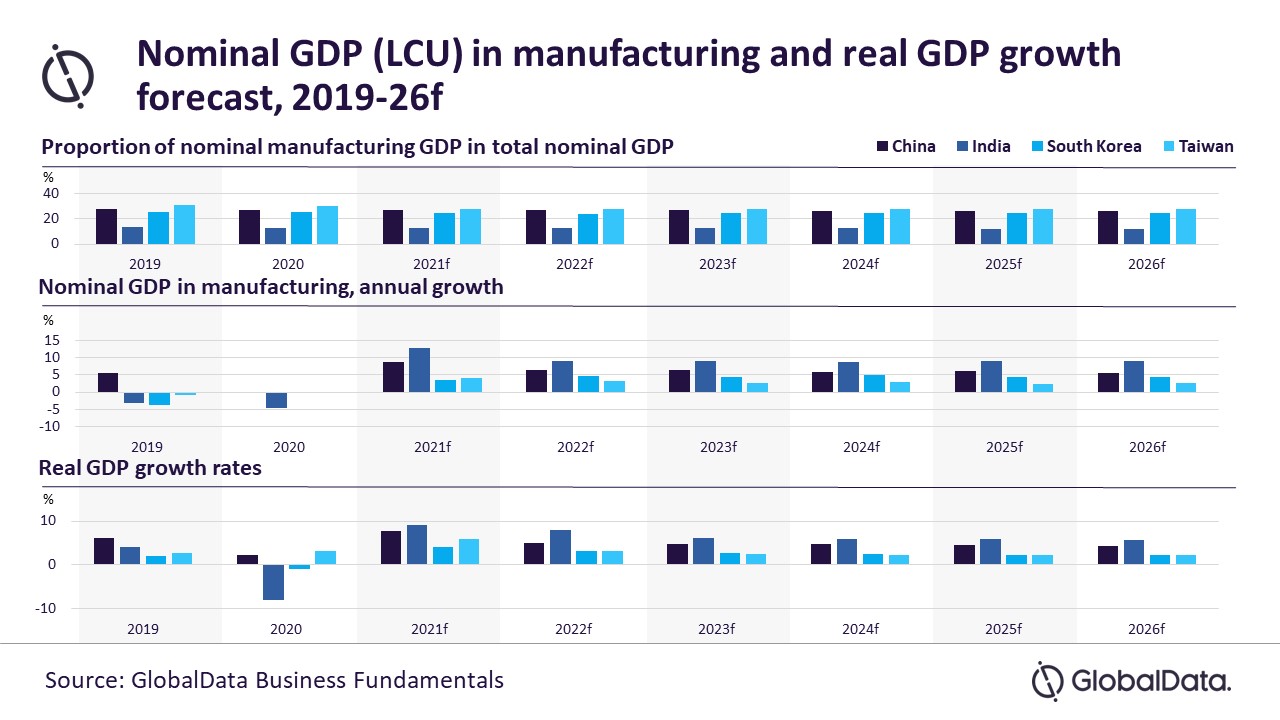 India has recently approved a $10bn comprehensive program for the development of sustainable semiconductor and display ecosystem in the country. Against this backdrop, India’s manufacturing GDP is forecast to grow at an average annual rate (AAGR) of 9%, in nominal terms, over 2022-26, forecasts GlobalData, a leading data and analytics company.
India has recently approved a $10bn comprehensive program for the development of sustainable semiconductor and display ecosystem in the country. Against this backdrop, India’s manufacturing GDP is forecast to grow at an average annual rate (AAGR) of 9%, in nominal terms, over 2022-26, forecasts GlobalData, a leading data and analytics company.
Since global supply of semiconductors is dependent on a few major players from South Korea, Taiwan, and China, it has accentuated the demand supply gap. India’s entry into the market can contribute to addressing the global chip shortage in the coming years. Meanwhile, India and Taiwan commenced negotiations in December 2021 for setting up a semiconductor manufacturing hub in India.
Shivangi Singh, Economic Research Analyst at GlobalData, comments: “Amid the global shortage of semiconductor chips, there lies a huge opportunity for India in the electronics system design and manufacturing ecosystem. Production-linked incentive schemes are expected to attract global players to set fabrication plants in India and help India establish its position as a major semiconductor manufacturer on the international front.”
According to GlobalData, India’s nominal manufacturing GDP is forecast to grow at an AAGR of 9% over 2022-26, which is considerably higher than the corresponding forecast for China, South Korea, and Taiwan (6.1%, 4.6%, and 2.8%, respectively), the leading manufacturers of semiconductor chips in the world. However, India’s manufacturing GDP as a percentage of total GDP is forecast to remain much below than that of China, South Korea, and Japan over 2022-26.
The Indian Ministry of Electronics and Information Technology launched the India Semiconductor Mission (ISM) on 29 December 2021, which will act as the nodal agency for the implementation of schemes on semiconductors and display ecosystem.
Singh concludes: “High production costs and lack of venture funding have been hampering the expansion of chip product design companies in India for several years now. The announced package provides for a design-linked incentive scheme that will give a strong boost to the chip design industry in India.
“The program can potentially become a gamechanger for India’s manufacturing and exports sector in the long-term. However, the success of the program will depend on India’s ability to tackle several infrastructure-related challenges such as continuous supply of power, abundant water supply, and dust-free environment at manufacturing plants. If managed well, the program can soon become one of the major drivers of India’s economic flourishment.”
www.globaldata.com





























































































